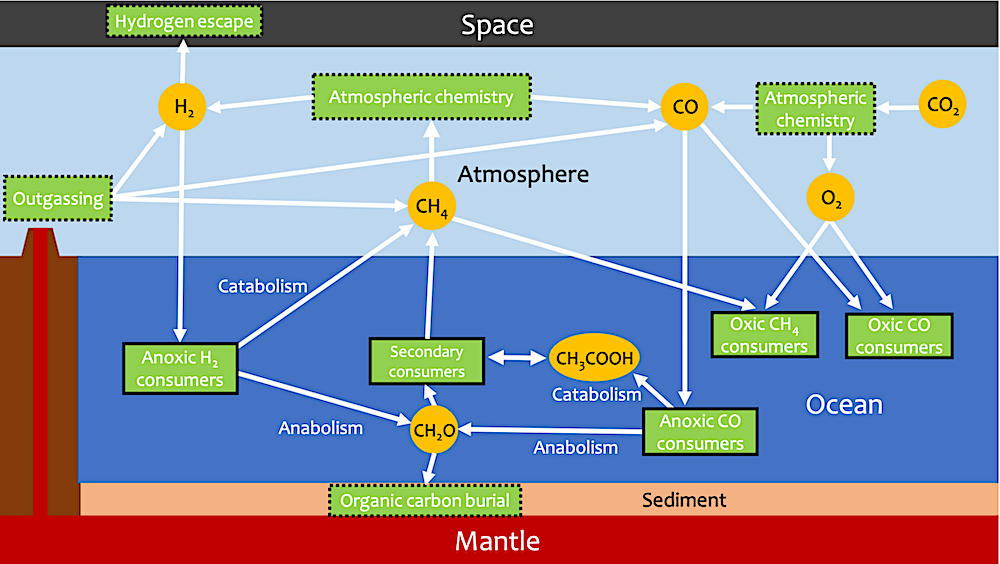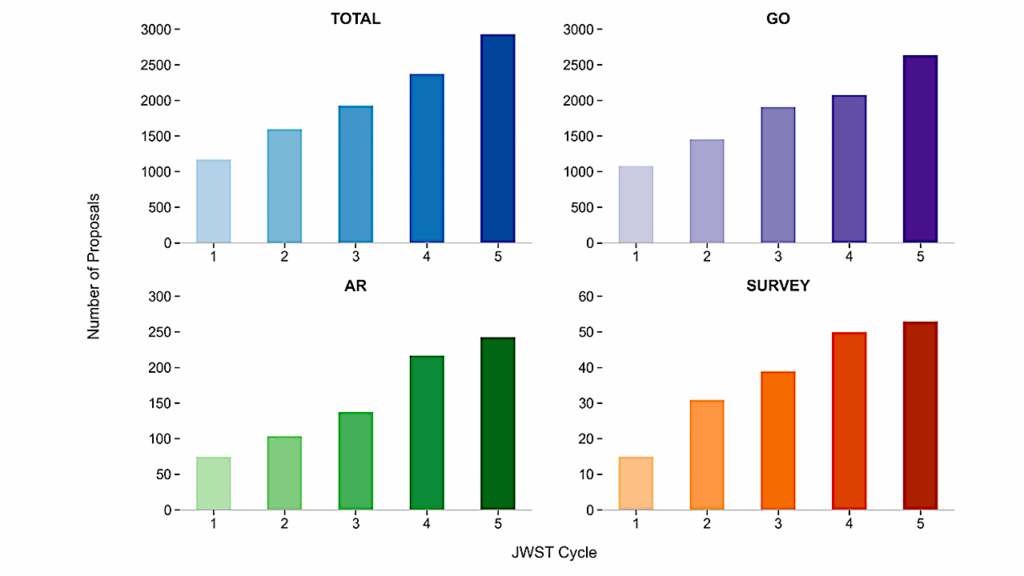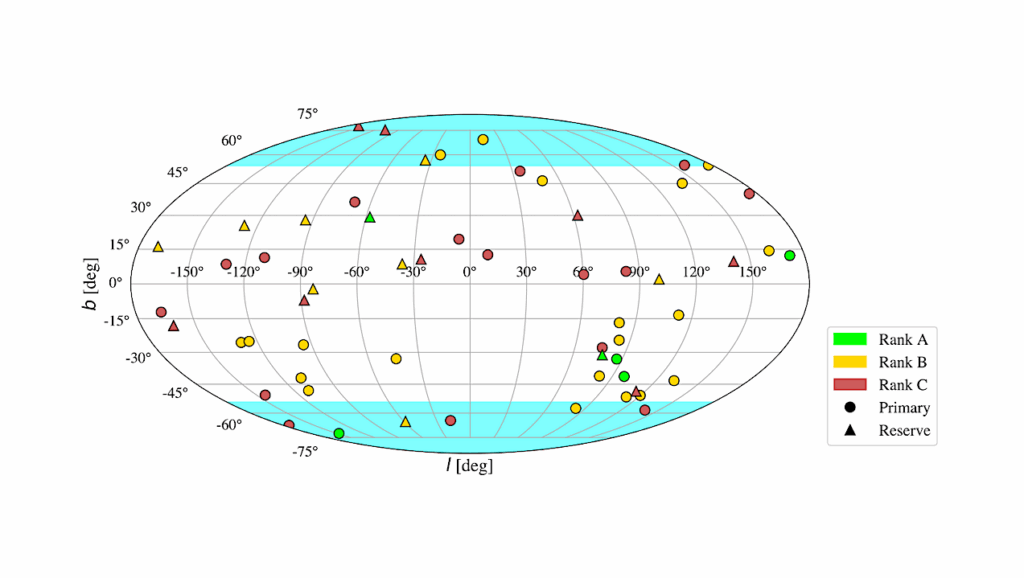Biosignatures From Pre-oxygen Photosynthesising Life On TRAPPIST-1e

In order to assess observational evidence for potential atmospheric biosignatures on exoplanets, it will be essential to test whether spectral fingerprints from multiple gases can be explained by abiotic or biotic-only processes.
Here, we develop and apply a coupled 1D atmosphere-ocean-ecosystem model to understand how primitive biospheres, which exploit abiotic sources of H2, CO and O2, could influence the atmospheric composition of rocky terrestrial exoplanets.
We apply this to the Earth at 3.8 Ga and to TRAPPIST-1e. We focus on metabolisms that evolved before the evolution of oxygenic photosynthesis, which consume H2 and CO and produce potentially detectable levels of CH4. O2-consuming metabolisms are also considered for TRAPPIST-1e, as abiotic O2 production is predicted on M-dwarf orbiting planets. We show that these biospheres can lead to high levels of surface O2 (approximately 1-5 %) as a result of CO consumption, which could allow high O2 scenarios, by removing the main loss mechanisms of atomic oxygen.

Schematic showing the biosphere reaction pathways and an overview of the interaction with the atmosphere captured in our modelling framework. Green boxes show processes, both biotic (dashed outline) and abiotic (solid outline), circles show reservoirs of species and arrows show fluxes between reservoirs via the different processes. Volcanic outgassing drives biospheric productivity by providing electron donors for primary producers. These are used for either catabolism to produce energy and CH4 as a waste product, with this energy used for biomass production, which is then either recycled by secondary consumers and eventually converted to CH4 again or the biomass is buried in the sediments. — astro-ph.EP
Increasing stratospheric temperatures, which increases atmospheric OH can reduce the likelihood of such a state forming. O2-consuming metabolisms could also lower O2 levels to around 10 ppm and support a productive biosphere at low reductant inputs. Using predicted transmission spectral features from CH4, CO, O2/O3 and CO2 across the hypothesis space for tectonic reductant input, we show that biotically-produced CH4 may only be detectable at high reductant inputs.
CO is also likely to be a dominant feature in transmission spectra for planets orbiting M-dwarfs, which could reduce the confidence in any potential biosignature observations linked to these biospheres.

Transmission spectra for biotic and abiotic configurations used here for TRAPPIST-1e with stellar spectra that is quiescent and a mean flaring spectra. Transmission spectra is generated using PSG Villanueva et al. (2018), with features labelled with the species causing them. — astro-ph.EP
Jake K. Eager-Nash, Stuart J. Daines, James W. McDermott, Peter Andrews, Lucy A. Grain, James Bishop, Aaron A. Rogers, Jack W. G. Smith, Chadiga Khalek, Thomas J. Boxer, Mei Ting Mak, Robert J. Ridgway, Eric Hebrard, F. Hugo Lambert, Timothy M. Lenton, Nathan J. Mayne
Comments: 29 pages, 19 figures
Subjects: Earth and Planetary Astrophysics (astro-ph.EP)
Cite as: arXiv:2404.11611 [astro-ph.EP] (or arXiv:2404.11611v1 [astro-ph.EP] for this version)
Submission history
From: Jake Eager-Nash
[v1] Wed, 17 Apr 2024 17:58:58 UTC (964 KB)
https://arxiv.org/abs/2404.11611
Astrobiology








